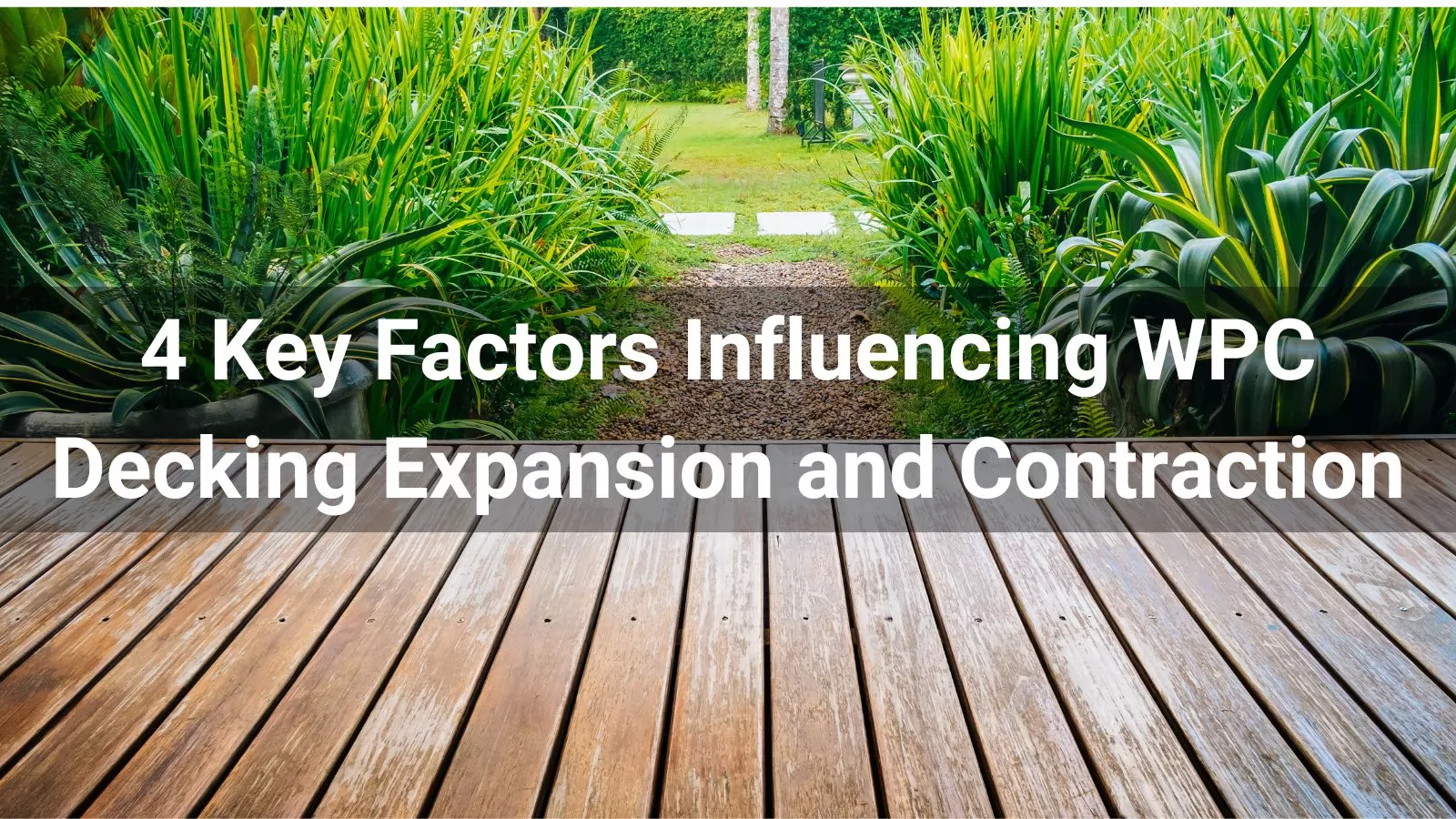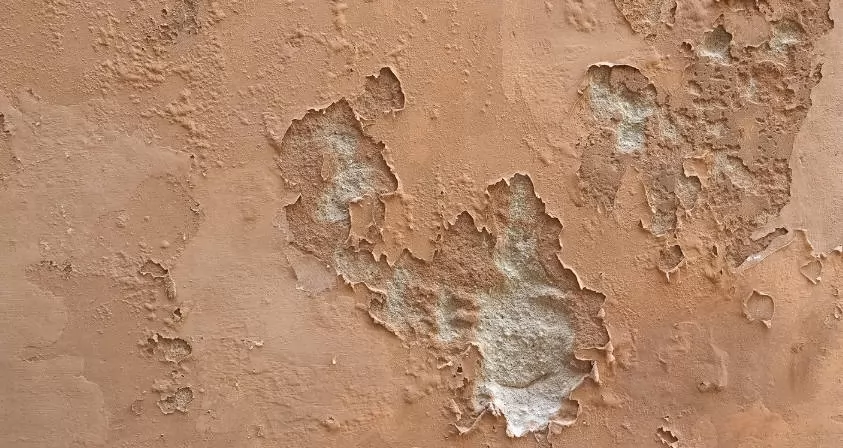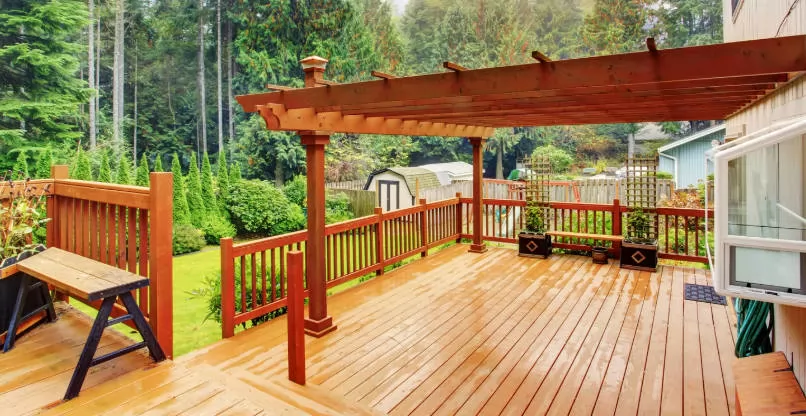

Wood-Plastic Composite (WPC) decking has become a go-to choice for homeowners dreaming of a stunning, low-maintenance outdoor space. Its blend of wood fibers and plastic offers durability and resistance to the elements that traditional wood can’t match. But here’s the catch: even WPC decking isn’t immune to the natural push and pull of expansion and contraction. These subtle shifts happen as the material reacts to its environment, and understanding what drives them can make or break your decking project. In this guide, we’ll explore the four major factors—temperature, moisture, UV light exposure, and decking color—that influence this process, arming you with the know-how to keep your deck looking and performing its best for years.
WPC Composite Decking - Temperature
Temperature is the star player in the expansion and contraction game. Like most materials, WPC decking responds to heat and cold in a predictable way: it stretches out when temperatures climb and shrinks back when they drop. Picture your deck boards soaking up the summer sun, their molecules buzzing with energy as they expand, only to huddle closer together in the chill of winter. It’s a natural rhythm, almost like your deck is breathing with the seasons.

This dance isn’t just poetic—it’s practical. If you’re installing WPC decking, you’ll want to leave small gaps between boards to account for this movement. Too tight, and the boards might buckle under pressure; too loose, and you’ll have wobbly footing. Flexible fasteners designed for composite materials can also help your deck flex gracefully with the thermometer. By planning for temperature swings, you’ll keep your deck stable and stunning, no matter the forecast.
WPC Composite Decking - Moisture
WPC decking boasts better moisture resistance than traditional wood, but don’t be fooled—it’s not completely waterproof. High humidity, heavy rain, or poor drainage can still sneak in and cause the boards to swell. Think of it like a sponge: even though WPC doesn’t soak up water as eagerly as wood, it can still absorb enough moisture from the air or ground to shift its shape over time.

The good news? You can outsmart this sneaky foe. Make sure your deck has proper ventilation underneath—think gravel or deck spacers—to let air circulate and whisk moisture away. Smooth drainage is key too; standing water is a recipe for trouble. And don’t skip regular cleaning—sweeping off debris and hosing it down now and then keeps your deck in fighting shape. With a little care, you can minimize moisture’s impact and keep your WPC decking looking sharp.
WPC Composite Decking Expansion - Sun
The sun is a double-edged sword for outdoor decking. Its warmth makes your space inviting, but its UV rays can take a toll over time. Prolonged exposure to sunlight can dry out WPC decking, much like it parches our skin, leading to tiny cracks or fading. This gradual wear doesn’t just affect the look—it can also make the material less stable, amplifying expansion and contraction as it weakens.

Luckily, modern WPC products often come with UV-resistant coatings to fight back against the sun’s relentless rays. When shopping, look for decking labeled as fade-resistant or UV-stabilized—these are built to hold their color and strength longer. Pair that with a simple maintenance routine (a quick wash with mild soap and water does wonders), and you’ll keep your deck vibrant and resilient, even under a blazing summer sun.
WPC Composite Decking - Deck Color
Believe it or not, the color of your decking isn’t just about aesthetics—it plays a big role in how much it expands and contracts. Darker shades, like deep browns or charcoals, drink in more sunlight and heat up faster, leading to greater expansion. It’s like wearing a black jacket on a hot day—you feel every degree. Lighter colors, like soft grays or creamy whites, reflect more heat, keeping things cooler and reducing movement.

Your local climate should guide your color choice. In scorching, sunny regions, lighter hues can help tame expansion and keep your deck comfortable underfoot. In cooler areas, darker tones might add a cozy warmth while still staying within manageable limits. It’s a balancing act between style and science—pick a shade that suits both your taste and your environment, and you’ll strike the perfect chord.
Understanding these four factors—temperature, moisture, UV exposure, and decking color—gives you the upper hand in creating a deck that stands the test of time. Expansion and contraction might sound like small potatoes, but ignoring them can lead to warped boards, popped fasteners, or an uneven surface that’s more headache than haven. The fix? It’s all about smart planning and a little TLC.
During installation, follow manufacturer guidelines for spacing and use hardware designed for WPC’s unique needs. After that, keep up with basic upkeep—clear away leaves, rinse off dirt, and check for drainage issues. With these steps, your deck won’t just survive the elements; it’ll thrive, becoming the outdoor retreat you’ve always envisioned.
WPC composite decking is a fantastic blend of beauty and brawn, but it’s not a set-it-and-forget-it material. By tuning into how temperature, moisture, UV light, and color affect its expansion and contraction, you can make choices that boost its longevity and charm. Whether you’re dreaming of a sun-soaked patio or a shady backyard escape, a little knowledge goes a long way. So, embrace the quirks of your WPC decking, plan with care, and watch it shine through every season! Contact us now!







